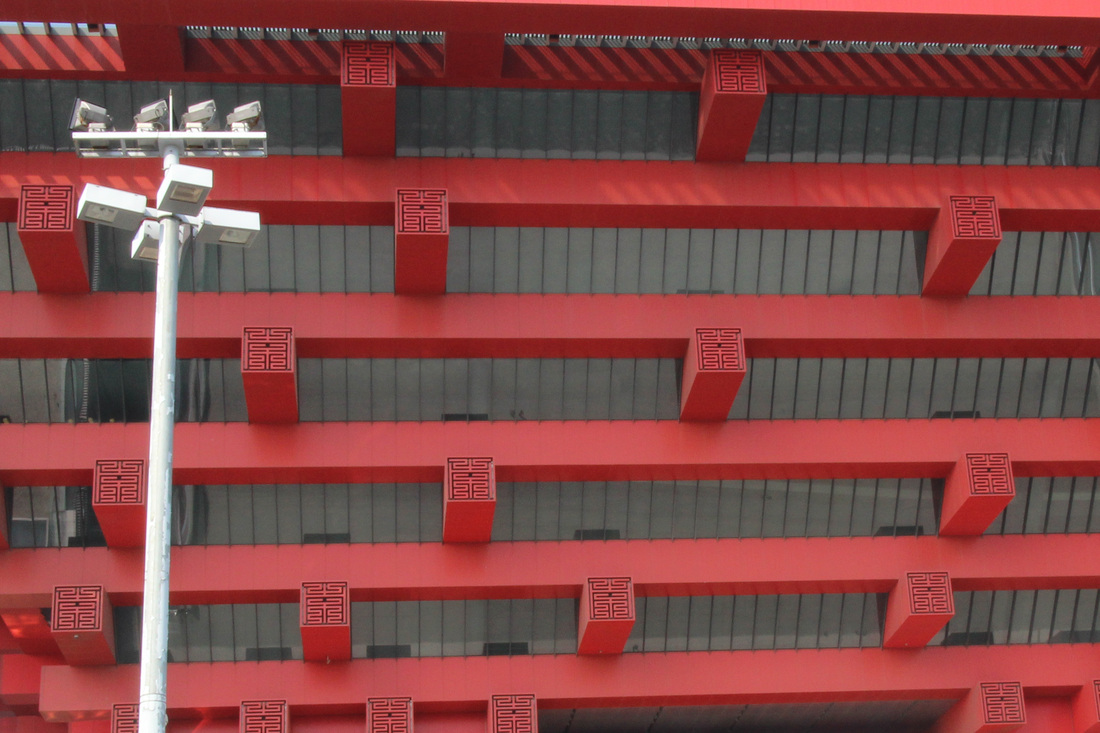Last weekend I went to China (gosh aren't years abroad fun etc), and in China - Shanghai, to be exact - I visited the building above, the China Art Museum. The museum, Asia's largest, occupies what was once the China pavilion at Shanghai's World Expo in 2010, where, in a spirit of global partnership and understanding, nations from across the world competed to see who could have the biggest/fanciest balls/building. The UK got involved, constructing Thomas Heatherwick's 'Seed Cathedral', a kind of fever-dream space hedgehog, full of seeds taken from Kew Gardens' Millennium Seed Bank project. It was very worthy, but in spite of that, I'm pretty confident the Chinese must have won the competition, with their big red one (matron) towering over all else.
One issue, though, is that it doesn't tower over much anymore. The area surrounding the gallery seems empty and lifeless; a lot of it is just empty waste ground. The idea of taking all of Shanghai's art galleries and consolidating them into one massive gallery, seems to have been done more with the intention of showing off, rather than genuinely supporting and integrating art and culture into the fabric of the city.
Having said that, I think it's worth a visit. For one thing, for the price of zero yuan you get 10 floors of artworks to visit, some of them very good. In my opinion though, the best thing about the China Art Museum is the way that, almost completely by accident, it gives you an unintentionally revealing glimpse inside the paradox at the heart of modern China. After all, when you can while away your time looking at paintings of the proletarian struggle against Japanese imperialism, or witness the smiling faces of the labourers toiling at the construction of a new railway for the greater good, and you can do it at the same time as you sip a Starbucks coffee from the store in the basement of the 68 metre-high, $220 million vanity palace that houses it all...Well, it's food for thought, I guess.
One issue, though, is that it doesn't tower over much anymore. The area surrounding the gallery seems empty and lifeless; a lot of it is just empty waste ground. The idea of taking all of Shanghai's art galleries and consolidating them into one massive gallery, seems to have been done more with the intention of showing off, rather than genuinely supporting and integrating art and culture into the fabric of the city.
Having said that, I think it's worth a visit. For one thing, for the price of zero yuan you get 10 floors of artworks to visit, some of them very good. In my opinion though, the best thing about the China Art Museum is the way that, almost completely by accident, it gives you an unintentionally revealing glimpse inside the paradox at the heart of modern China. After all, when you can while away your time looking at paintings of the proletarian struggle against Japanese imperialism, or witness the smiling faces of the labourers toiling at the construction of a new railway for the greater good, and you can do it at the same time as you sip a Starbucks coffee from the store in the basement of the 68 metre-high, $220 million vanity palace that houses it all...Well, it's food for thought, I guess.



